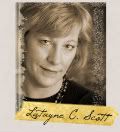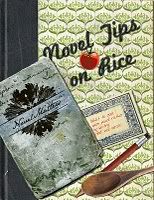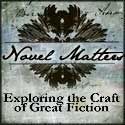 (News! I can't stand it! I just have to give away another copy of Latter-day Cipher! God is blessing it with keeping it on the Amazon best-seller list for its category (Christian Mystery) and I want to send it to someone who has not read it yet. So -- I'll randomly choose someone who comments on this post.)
(News! I can't stand it! I just have to give away another copy of Latter-day Cipher! God is blessing it with keeping it on the Amazon best-seller list for its category (Christian Mystery) and I want to send it to someone who has not read it yet. So -- I'll randomly choose someone who comments on this post.)Now, on to the subject at hand: plotting a novel.
Recently I spoke at the University of New Mexico’s annual Writer’s Conference, “From Start to Sales V."
Though I’ve been asked many questions about the writing of my novel, Latter-day Cipher, I was approached about two issues new to me. One (and this one greatly dismayed me) was the question that was asked by several people in different forms. It was, “How can I take a WIP (or completed novel) and make it Christian so I can offer it to a Christian publisher?” The implication was that the Christian market was a place for what you might not be able to sell to a secular publisher, but if spiffied up with what one contest judge on Twitter wryly called “clunky Jesus insertions.” Ask any of us here at Novel Matters – is the Christian novel marketplace an easy target?
Secondly, the audience wanted to know how I plotted Cipher. I think I surprised them when I told them what I did: I took a class in novel writing about 15 years before beginning Cipher, and started a first novel which I never finished. However, when I began Cipher, I did two things. First, I bought a workbook called The Marshall Plan Workbook : Writing Your Novel from Start to Finish. I tore the pages out, put them in a binder, and did exactly what the author said to do in terms of number of pages assigned to characters, pacing, placing of “surprises,” etc. Then I took a paperback copy of what I consider to be one of the most effective and well-plotted suspense novels I’ve ever read (though I was ambivalent about the content, you understand), The Silence of the Lambs.
I outlined the whole book, noting when the POV changed, when surprises were introduced, what number of pages were used in scenes.
It felt like a wonderful protective armor, a kind of framework within which to be creative but still satisfying the reader.
Later, I learned of Randy Ingermanson’s “Snowflake Method” for writing a novel. I love it, and along with Marshall’s workbook and my notes from Silence of the Lambs, I’ll use it in refining the plot of the novel I’m now working on.
What works for you?












19 comments:
I am in nearing the end of my first WIP and had a general outline, but basically am a pantster. I have realized I need to be more organized in my plotting next time and hope to find something that works for me. Your ideas were very helpful!
Just wanted to stop by and thank you for the kind words on my blog (about Caribou) and to apologize for the delay in my response (my spam filter goes a little crazy sometimes and I just discovered your comment there!). Also wanted to say, I am sorry about the loss of your GSD - they are so incredibly special to us, aren't they?
http://www.caribousmom.com
I've always known that plotting women's fiction was different. Now, people are writing and talking about it, only it's not what I expected.
I've modified The Hero's Journey with its "pattern" of ordinary life being interrupted by an inciting incident with a mentor thrown in and a climatic confrontation with the antagonist, usually internal conflict. The story is propelled by rising antagonism and the active pursuit of desire. Again, the antagonism is external and internal.
How to modify this for women's fiction? First, the ordinary world is not perfect but known, but then something forces the protag to decide what she's going to do about the disequilibrium. Her nest is disheveled, and the action is all about getting that nest (relationships) back into a more comfortable order.
So far, this is what I've been doing. But now the talk is of descending into deep places, and, well, I'm not so sure I agree. Disequilibrium in the writer!
As I'm plotting my sixth novel, I'm agonizing a bit over which way to go--with what I know, and I'm thinking--hoping--has worked or tweaking and elevating my work.
This is a great post. Thanks for sharing what worked for you and for a chance to win your book.
My WIP came to me as I was driving from NH to GA. I was so lost in the story I almost ran a little Mercedes off the rode. (Still makes my heart pound and theirs too, I'm sure!) When I arrived home, I frantically typed a sort of rough outline written in present tense, including a few scenes with dialogue.
Soon afterwards, I found Randy Ingermanson's Snowflake Method. I love it. It helped me make sense of the chaos I had written. It also helped me see where I had plot holes.
Wendy, I'm so grateful for wonderful dogs like your Caribou who served the human race as a search and rescue dog. Those kinds of canines are my heroes!
Sherrinda, Patti, and Alisa, I appreciate your comments. Believe me, I thought for a while about whether or not I should give away my plotting secrets (smile.) But very few people, I would assume, come into this world "hard wired" to create satisfying plots. I'm not one of them!
Latayne
www.latayne.com
I've tried various plotting methods but realized I'm internal plotter. Because I start each project with a single question, and form my characters around the question, my plots come to me pretty quickly. I resist the urge to write down the plot, because for me it tends to set the plot in stone and not allow the characters to surprise me. What never changes for me, however, is the overall plot and structure. I always know where point A and B are and require my characters stay on course.
Lyle: Thanks for that wonderful term "internal plotter". LOVE it!
*as she goes off, dancing in the wind and rain*
Lyle: The surprising thing about plotting is that your characters don't always pay attention and go off on their merry ways.
"Hey, come back here!" I say.
The character will respond, "Trust me, this is a better way to go."
And it is!
Oddly, these detours don't collapse the plotting, only strengthen the story. I once heard, "No surprise for the writer, no surprise for the reader."
This is true.
Lyle, I guess I'm more of an "internal plodder." No kidding -- I was so unsure of myself. I had spent so many years with carefully-outlined non-fiction that the relative (structural) freedom of a novel stopped me in my tracks more than once.
I did experience what Patti described, of a character leading me away with his hand. In my particular case, he led me to his own death.
Ought to be a warning, don't you think, to all future characters, not to get too bossy?
Latayne C Scott
www.latayne.com
PS Bonnie, you go on, dancing in the wind and rain. If I did that I'd look and smell like my new puppy.
I find I have to combine outlining and winging it. I have a basic idea of what the story's about and where it will end up, with a few of the key events along the way. That forms a loose framework. Then it doesn't matter how hard I try, I can't break it down any further. I have to write a chapter or two or five, throw the characters together, watch them interact (and yes, they sometimes surprise me). Then when I stall, I go back to the outline. I can fill in a lot more of the empty spaces at this point. I look at the story from the perspectives of secondary and even tertiary characters, and these new viewpoints usually inspire more ideas. When I can't think of any more, I start writing again. Until I stall. Then I look at the outline...
In theory, I would love to outline the whole story right down to individual scenes, but it just ain't gonna happen. I tried the Snowflake method, and again, I can only go part way into it before I need to write to find the rest of the story.
Joe Vorhaus' structure has been helpful to me too, especially because he has a more nuanced way of looking at Ingermason's "disasters". I applied it backwards to my completed novel and discovered I had followed it unawares. It helped me writing my synopsis, because I understood my own story better. LOL. Learning by osmosis is good...
Does anyone here use a program of any kind to help them? I have tried using YWriter5 and Storyweaver. Storyweaver drove me crazy with it's endless dissecting of every little detail of what I had written and I eventually gave up on it, but YWriter5 allowed me to approach any project in chunks and it was free so that was a plus!
Thank you so much for this interesting discussion on plotting.
I have a copy of Novel Writing by Even Marshall. Is the workbook that you used based on this book?
Happy writing
Ruth Dell
ruthdell [at] mweb [dot] co [dot] za
Hey Ruth. That is indeed the workbook! (Or used to be a workbook before I tore it apart. Now they're worksheets. :)
Latayne C Scott
www.latayne.com
Great post! I never actually realized there *was* a Christian mystery category until I ran across your Tweet and followed it here. And though I'm aware of the snowflake method, I'd never heard of the Marshall Plan. I'm off to follow the link, but I'll be back to your blog in the future.
Janet, my way of plotting is much like yours. I draw up an outline, then set it aside, ignore it, and write. When I get lost, I go back to the outline, and often have to revise it, because my characters have ignored it as well. Still, it helps to have some idea where I'm going. Northwest or northeast, but definitely north.
Unless it's south...
Who is Joe Vorhaus?
Sorry, Kathleen, that should have been John Vorhaus. He's a scriptwriter, and has written a book called The Comic Toolbox on writing comedy. I haven't actually read it, but the plotting structure he lays out in there is really good for pretty much any fiction plotting. I found an outline of it somewhere on the Internet, and it's been a great help to me. I should buy the book out of gratitude.
I may be a bit twisted(*!) but what works for me is to start with a loose, extremely simple outline, do research, get to know some characters and then flesh it out (even plotting details on calendars & dates/family histories on Excel worksheets). I write down a few scenes that are insistent and clear, but I wait to write the manuscript until 'everyone' has had their say, kind of like a brainstorming session with the characters. At the right time (when the doctor says it's okay to 'push') I start writing and try to get the rough draft out. The last time, I went away to a retreat center for 3 days and I got it about 1/2 to 3/4 finished. Of course, it was a flexible outline, but because I prefer to take the time up front, I didn't have to make major revisions. I hate major revisions...
Debbie, I love that comparison of waiting to "push" when writing a novel. I'd say that much of my frustration has been in pushing before I was in the right stage of labor, so to speak.
And Janet -- you are our winner of a copy of Latter-day Cipher. No strings attached. Except I want you to tell everyone you know about it, if you like it :)
Please email us here and give us your snail mail address, and congratulations!
Latayne C Scott
www.latayne.com
:o) Too cool!
Post a Comment